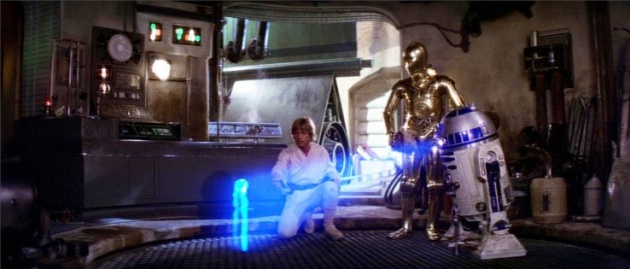
Everyone’s favorite wonder material, graphene, could soon create realistic 3D screens for mobile devices and smartphones. Whereas most 3D displays have thus far depended on fancy glasses or, in a last resort, parallax barriers that simulate 3D in the same way those gaudy pictures of waterfalls and winking ladies simulate movement.
Scientists at Swinburne University, however, are working on a 3D display that uses a graphene mesh and lasers to literally “float” an image over the screen, Princess Leia-style.
The system “uses graphene oxide and complex laser physics to create a pop-up floating display without the need for 3D glasses.” By changing the refractive index of the screen, you can create 3D effects that are beyond anything we’ve seen.
“If you can change the refractive index you can create lots of optical effects,” said Professor Min Gu, director of Swinburne’s Centre for Micro-Photonics.
Don’t look for “help me Obi-Wan Kenobi”-style FaceTime any time soon, however. The technology is still very nascent and will require more research to move it into the commercial realm.



